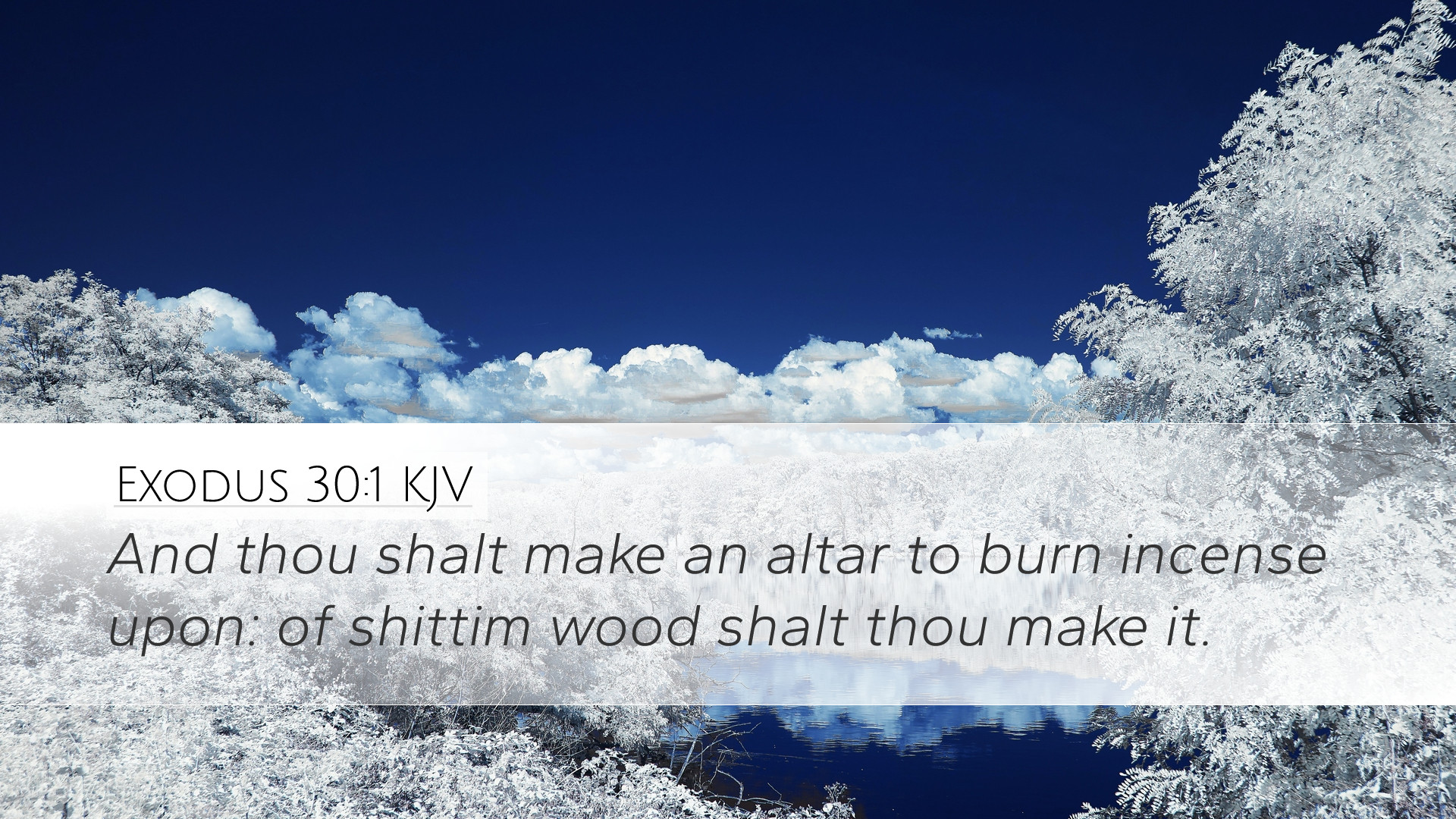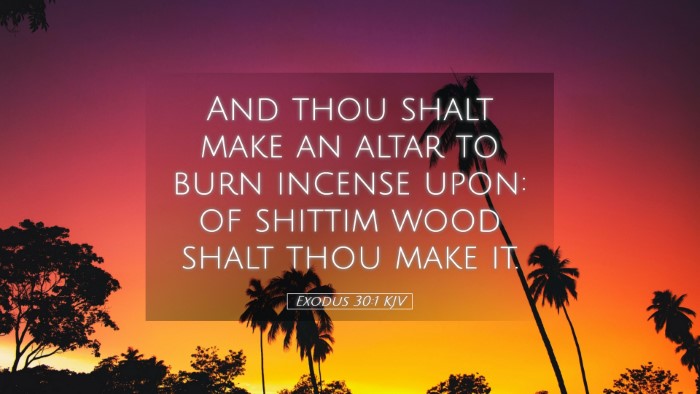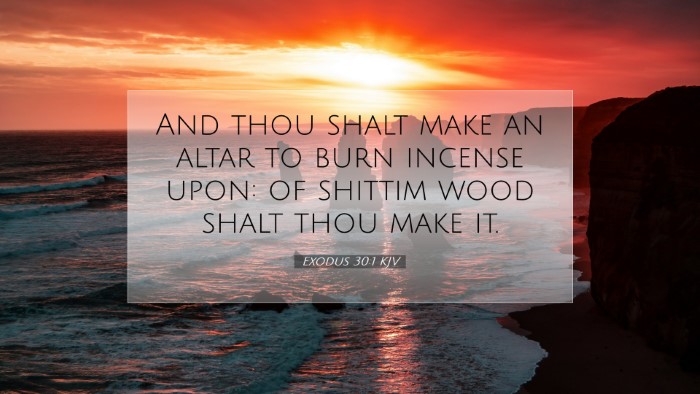Commentary on Exodus 30:1
Verse: "And thou shalt make an altar to burn incense upon: of shittim wood shalt thou make it."
Introduction
This verse is crucial within the context of the Tabernacle's construction and the system of worship instituted among the Israelites. Incense played a vital role in the religious practices of the people, representing both prayer and the presence of God. The altar of incense symbolizes the connection between God and His people, emphasizing the importance of worship and intercession.
Insights from Matthew Henry
Matthew Henry emphasizes the significance of the altar of incense. He notes that it was a specific structure designed for a sacred purpose—burning incense, which was to be continually offered before the Lord.
- Divine Instruction: Henry outlines how the precise materials (shittim wood) and dimensions (not mentioned in this verse but detailed later) were specified by God, illustrating the importance of adhering to divine commands in spiritual practices.
- Symbolism of Incense: The use of incense symbolizes the prayers of the saints. Psalm 141:2 parallels this imagery, indicating that as incense rises, so do prayers to God.
- Access to God: The altar stands before the veil, which separated the holy place from the most holy place. This proximity reflects the believers' need for continual access to God through prayer and supplication.
Insights from Albert Barnes
Albert Barnes provides further elaboration on the importance of the altar of incense within the broader sacrificial system. He notes:
- Cultural Context: Barnes posits that incense was a common element in ancient worship practices, signifying honor and reverence. Its inclusion in Israelite worship set them apart, emphasizing the distinct relationship between God and His covenant people.
- Spiritual Lessons: The act of offering incense represents a ministry of intercession, where the priest, on behalf of the people, ascends before God with their prayers. Barnes notes that this practice foreshadows the mediatorial work of Christ.
- Continual Offering: The instruction for continual burning of incense underscores the importance of prayer in the life of believers—emphasizing spirituality that is persistent and unwavering.
Insights from Adam Clarke
Adam Clarke's commentary offers a deep dive into the specific materials and meanings tied to the altar of incense. He asserts:
- Material Significance: Clarke explains that shittim wood (acacia) is known for its durability, symbolizing the eternal nature of God and the permanence of His covenant with His people.
- Incense Composition: Clarke delves into the specific aroma and preparation of the incense, emphasizing that it must be holy and specially prepared, precluding any common use that would defile its sacredness.
- Heavenly Connection: He correlates the rising of incense with the notion of achieving a heavenly audience, suggesting that prayer and worship are a joint effort of humanity reaching out to the divine for guidance and grace.
Theological Themes
Exodus 30:1 encapsulates several essential theological themes.
- The Nature of Worship: The altar serves as a significant point of instruction regarding how God desires to be approached and worshiped. Worship must be meaningful, intentional, and in accordance with divine standards.
- The Role of Intercession: The priest's duty at the altar reflects the overarching theme of intercession found throughout Scripture. This foreshadowing of Christ as the ultimate High Priest is essential for understanding the fulfillment of the Old Testament system in the New Covenant.
- Divine Presence: The proximity of the altar of incense to the veil leading into the most holy place signifies the tangible presence of God and the call for holiness that His people must observe in their approach.
Practical Applications
For pastors, students, and theologians, there are several practical applications derived from Exodus 30:1.
- Prayer as a Priority: This passage calls believers to prioritize prayer, recognizing its critical role in maintaining a vibrant relationship with God. Churches and individuals alike should cultivate a spirit of continuous prayer, akin to the burning incense.
- Holiness in Worship: Understanding that God requires holiness in worship speaks to the need for integrity and reverence in our spiritual practices, aligning with God's standards rather than cultural norms.
- Understanding Mediatorship: This altar serves as a reminder of the mediatorial role of Christ, which should be a focal point in theological exploration and preaching—contextualizing the gospel message within the framework of the Old Testament.
Conclusion
Exodus 30:1 is more than a mere instruction concerning a physical altar; it encapsulates a rich tapestry of prayer, worship, holiness, and intercession, inviting us into a deeper understanding of our relationship with God. The insights drawn from the commentaries illustrate the multifaceted nature of this verse, providing a foundation for robust theological reflection and practical application for believers today.


